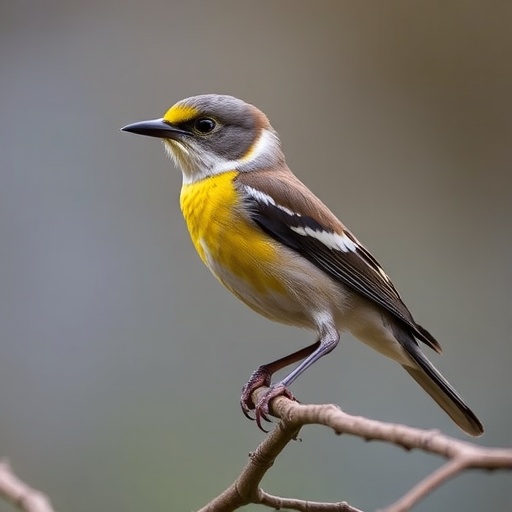Avian species have long fascinated scientists due to their remarkable diversity and adaptability. With more species of birds than mammals, they occupy a myriad of ecological niches across the globe. Birds and mammals diverged from a common ancestor over 300 million years ago, yet a number of avian species showcase advanced cognitive abilities, including numerical comprehension, that rival even the most intelligent primates, such as great apes. This astonishing capacity invites researchers to explore the cognitive functions that underpin numerical abilities and to consider the evolutionary paths that have led to these remarkable insights in avian intelligence.
In recent years, studies have revealed that certain bird species can engage in complex mental tasks with a proficiency that has surprised many in the scientific community. For instance, researchers have observed that species such as corvids—known for their problem-solving skills—can perform numerical operations that appear almost sophisticated. These discoveries indicate that the cognitive toolkit of birds may be more intricate than previously understood and serves as an example of evolutionary convergence, where different species independently develop similar cognitive functionalities under comparable environmental pressures.
Investigations into the cognitive abilities of birds have opened a window into understanding how they perceive and manipulate numerical information. Scientific inquiries into avian numerical cognition typically encompass varied methodologies: behavioral laboratory studies that assess performance through controlled tasks, field studies that observe naturally occurring behaviors in the wild, and neurobiological investigations that delve into the underlying neural processes. Collectively, these approaches paint a rich tapestry illustrating the avian mind’s capabilities and offer tantalizing hints at how cognitive processes might have evolved among disparate species.
Behavioral studies, particularly those conducted in laboratory settings, have demonstrated that some birds can distinguish between different quantities and even execute basic arithmetic operations. For instance, the celebrated work with New Caledonian crows illustrates not only their ability to count but their capacity for abstract representation. By employing tasks that involve rewards based on numerical comparisons, researchers found these birds could consistently perform better than chance, suggesting they possess an innate understanding of numerical values.
Moreover, observational studies in natural settings provide compelling evidence that birds engage in numerical cognition within their everyday behaviors. One fascinating example is the way flocks of birds coordinate their movements, often adjusting their numbers based on proximity to potential threats. Such behaviors underscore the necessity of numerical skills in avian survival and social interaction, hinting at a cognitive sophistication that aligns with their ecological demands.
Neurobiological investigations further elucidate the mechanisms that might underlie avian numerical abilities. Studies have highlighted that avian brains, though structurally different from mammalian brains, possess analogous regions responsible for certain cognitive functions. Notably, the forebrain in birds—the pallium—operates in ways akin to the mammalian neocortex, demonstrating that convergent evolution has potentially led to similar cognitive outcomes despite distinct anatomical frameworks. This discovery raises interesting questions about the nature of intelligence and whether it can be universally classified across taxa based on functionality rather than morphology.
Despite the promising insights gained from avian studies, there remain significant methodological challenges and limitations in this field. Some critics argue that the paradigms used to evaluate bird cognition may not uniformly reflect their natural behaviors. Assessing the cognitive skills of birds in artificial environments can yield results that do not fully represent the complexities of life in the wild. Therefore, a comparative perspective that intertwines findings across species and methodologies is essential to fully appreciate the evolution and functioning of numerical cognition in birds.
The findings from research on avian numerical cognition do not only enrich our understanding of bird intelligence. They serve as a mirror reflecting broader themes in cognitive science, including the role of evolutionary history in shaping mental faculties. The investigation of how different animal species approach similar cognitive challenges offers insights into the adaptive significance of such traits and raises inquiries about the evolutionary pressures that might have facilitated these developments.
As studies continue to probe the depths of avian cognition, a clearer picture of how numerical abilities function across species is emerging. By synthesizing current knowledge from behavioral experiments, ecological observations, and neurobiological research, researchers are piecing together an intricate puzzle of cognition that spans the avian world. The ongoing dialogue between fields such as psychology, evolutionary biology, and neuroscience is helping to contextualize avian studies within a more extensive framework of cognitive research, revealing the complex interplay between evolution and intelligence.
In closing, the cognitive capacities of birds, particularly regarding numerical abilities, are not merely a testament to their intelligence but also a reflection of the remarkable adaptability and diversity of life on Earth. As researchers continue their explorations, the avian perspective offers invaluable insights that deepen our understanding of cognition and the evolutionary pathways that have shaped it. The role of birds in unraveling the mysteries of the mind stands as a fascinating frontier for scientific inquiry—one that promises to challenge preconceived notions of intelligence and compel us to reconsider our understanding of the cognitive landscape of the animal kingdom.
Through these endeavors, the avian world invites us to rethink the very fabric of cognition, encouraging a more inclusive perspective that acknowledges the richness of intelligence beyond the human experience—an essential step in uncovering the intricate web of life and its myriad forms of understanding.
Subject of Research: Avian Numerical Cognition
Article Title: Numerical cognition in birds
Article References:
Regolin, L., Loconsole, M., Rosa-Salva, O. et al. Numerical cognition in birds.
Nat Rev Psychol 4, 576–590 (2025). https://doi.org/10.1038/s44159-025-00480-8
Image Credits: AI Generated
DOI: 10.1038/s44159-025-00480-8
Keywords: avian cognition, numerical abilities, evolutionary biology, cognitive science, intelligence




